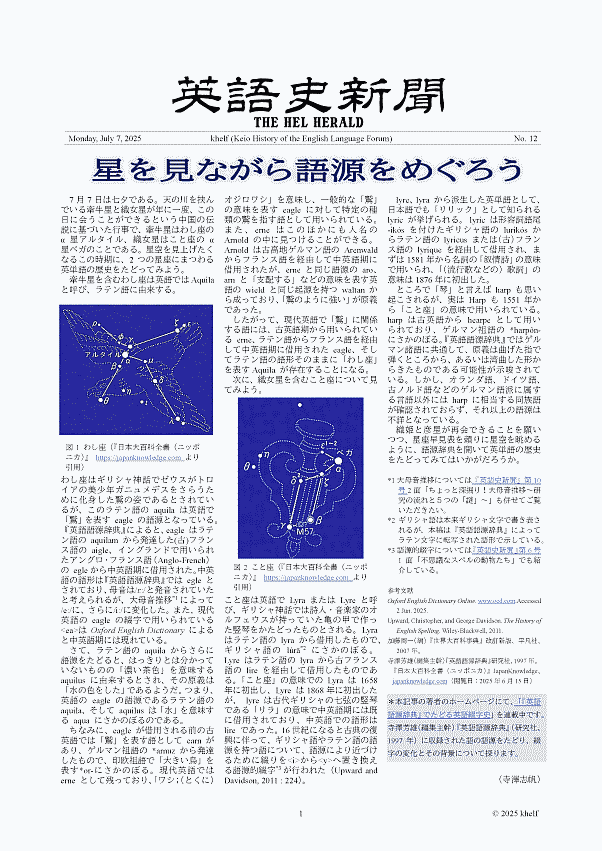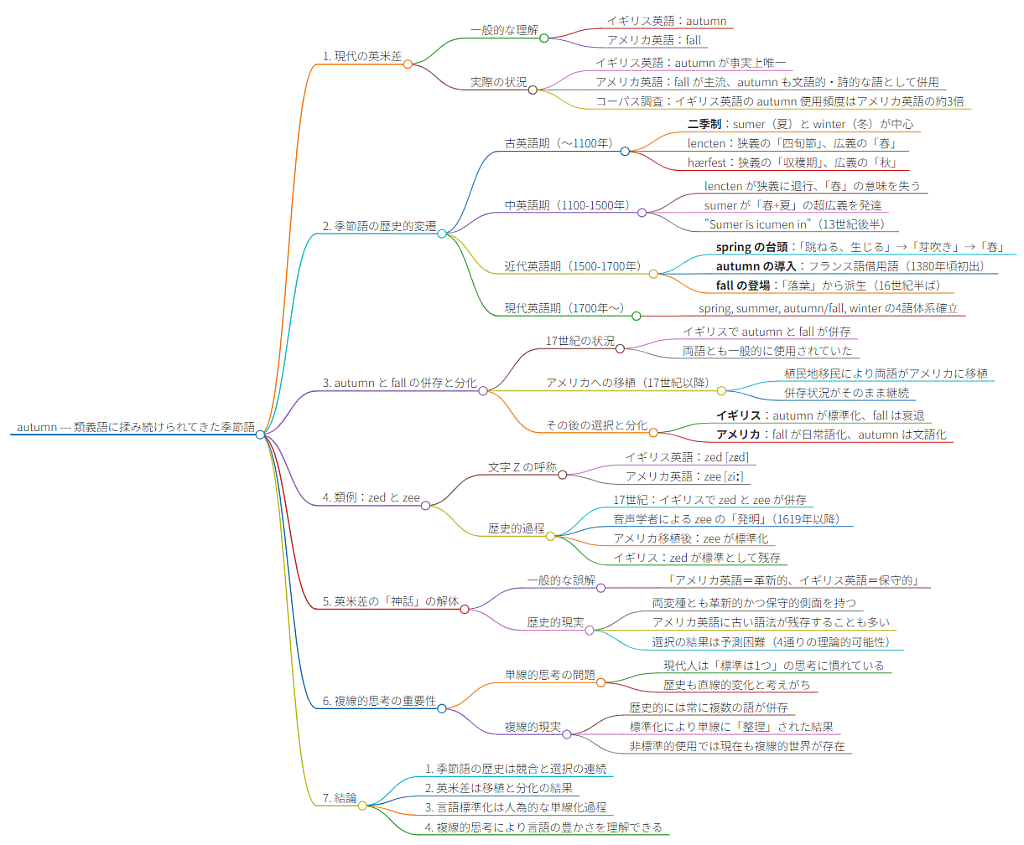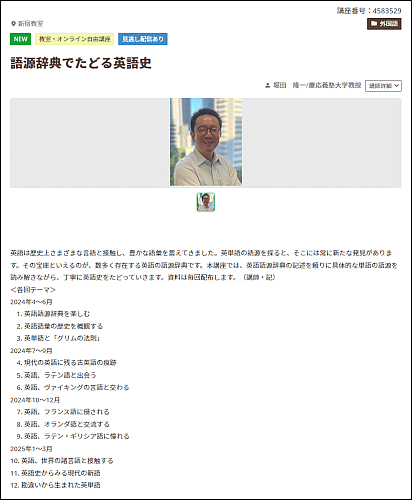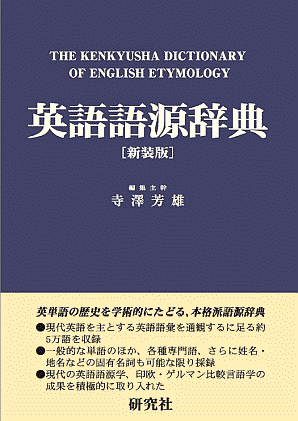2025-11-08 Sat
■ #6039. New Zealand English におけるマオリ借用語の発音をめぐる社会言語学 [sociolinguistics][new_zealand_english][maori][borrowing][loan_word][pronunciation][orthography][language_planning][writing][standardisation]
NZE には,マオリ語からの借用語が多く入っている.地名や人名などの固有名詞はもちろん,一般語も多く流入している.英語の文脈でマオリ借用語をどのように発音するか,という問題について,Bauer (398--99) が興味深い論点を示している.
The proper pronunciation of Maori is currently a controversial issue in New Zealand, and it is a subject on which feelings run high. The issue is at heart a political rather than a linguistic one, since it is clear linguistically that there is no good reason to expect native-like Maori pronunciation in words which are being used in English. None the less, it has the linguistic consequence that there is a good deal of variation in the way in which Maori loanwords are pronounced in English, with variants close to native Maori norms at the formal end of the spectrum, and much more Anglicised versions --- sometimes irregularly Anglicised versions --- at the other. To give some idea of the variation this can lead to, I present below a few place-names with a Maori pronunciation and one extreme English pronunciation. Variants are heard anywhere on the continuum between these two extremes.
この文章の後に具体例がいくつか挙げられているが,たとえばマオリ語でニュージーランドを表わす Aotearoa (長く白い雲の土地)は,マオリ語母語発音では /aːɔtɛːaɾɔa/ となり,これで発音する英語話者もいれば,そこから完全に英語化した /eɪətiəˈɹəʊə/ として発音する者もいる.また,この2つを両極として,中間的な発音も多数あり得るというのだから,揺れの激しさが想像される.
この揺れの背景には,英語とマオリ語の音韻体系の差異,マオリ語のリテラシー,オーディエンスへの配慮,マオリ語への立ち位置や思い入れ,言語計画・政策上の立場など,様々な言語学的,そしてなかんずく社会言語学的な要因が作用しているのだろう.国号の発音を1つとっても,そこに話者の態度や立場が色濃く反映している可能性があるということだ.
なお,マオリ語をローマ字で表記する際の綴字は,1830年代後半から1840年代までには標準化されていたという (Bauer 398) .意外と早かったのだな,という印象だ.
・ Bauer L. "English in New Zealand." The Cambridge History of the English Language. Vol. 5. Ed. Burchfield R. Cambridge: CUP, 1994. 382--429.
2025-10-29 Wed
■ #6029. rice with oat crackers から考える,穀物 oat の英語史と食文化史 --- 食レポ from NZ [etymology][loan_word][johnson][countability][food]

NZ滞在も4週間が経ちました.現地のスーパーマーケット PAK'n'SAVE の特売コーナーを覗くのが日課となりつつあります.先日,店に入ってすぐの特売棚に見つけたのが,「おっ」と思わせる一品,rice with oat crackers でした(なぜ?).要するに,私の好物である「お煎餅」が,日本から1万キロほど離れた地で格安で手に入るとなれば,買わない手はありません.1パック49セント(=約43円)という破格の安さ!
しかし,この名前に一抹の不安を覚えたのも事実です.上記のパッケージの写真に見えるように,純粋な rice crackers ではなく rice with oat crackers となっています.oat 「カラスムギ,燕麦」が混じっているのです.しばしばスコットランドと結びつけられる穀物で,粥状の porridge として食されることが多いものです.私もスコットランド留学中,朝食に食べていた時期がありました(cf. 「#61. porridge は愛情をこめて煮込むべし」 ([2009-06-28-1])).
そんな oat 入りの煎餅を一口食べてみて,ナルホドと頷きました.パリッとした歯応えはまさしく煎餅ながらも,飲み込んだ後に鼻に抜ける香りで,米100%ではないことがすぐに分かりました.この風味が oat なのでした.ただし,若干の違和感がある程度で,決してまずいわけではなく,煎餅としては食べられる代物です.しかも破格のお値段とあれば,及第点といってよいと思います.
さて,oat と聞けば,英語史を学んだことのある者は,ある有名なエピソードを思い浮かべることでしょう.1755年に「ジョンソン博士」こと Samuel Johnson がほぼ独力で編纂した,英語史上に名高い辞書 A Dictionary of the English Language における oat の定義です.Dr. Johnson といえば,18世紀イギリスの大文豪であり,辞書制作の功績もさることながら,当時のスコットランドへの偏見と嫌悪を隠さない人物としても知られています.その辞書で oat を引くと,次のように定義されているのです.
grain, which in England is generally given to horses, but in Scotland supports the people
この定義は,イングランドでは馬の飼料扱いであるにもかかわらず,スコットランドでは人が食っている,という皮肉を効かせた記述となっています.Johnson らしさが炸裂していますね.辞書という公器に個人的な偏見を盛り込んでしまうところに,大文豪のユーモアと傲慢さが見てとれます.このくだりについては「#1420. Johnson's Dictionary の特徴と概要」 ([2013-03-17-1]) でも取り上げていますので,そちらもご覧ください.
さて,この oat について興味深い記述を,ふと手に取った OALD (= Oxford Advanced Learner's Dictionary) 8版における oat の語源欄に見つけました.これは語源そのものの話題というよりも,文化史的な意義をもつ指摘で,想像力を掻き立てる記述でした.
oat Old English āte, plural ātan, of unknown origin. Unlike other names of cereals (such as wheat, barley, etc.), oat is not an uncountable noun and may originally have denoted the individual grain, which may imply that oats were eaten in grains and not as meal.
他の主要な穀物 (barley, corn, rye, wheat) が不可算名詞扱いであるのに対し,oat だけが可算名詞であるという洞察に富む指摘です.barley や wheat などの穀物は,通常,粉に挽くことが多いので,食物としてとらえる際には不定冠詞も複数形の -s もつかない不可算名詞として扱われます.ところが,oat は可算名詞であり,通常 oats のように複数形で用いられます.OALD8 のこの指摘によれば,他の穀物が「粉に挽いてから食べるもの」だったのに対して,oat は少なくともかつては「粒のまま食べるもの」だった可能性が示唆されるというのです.つまり,日本人が米を粉にせず粒のまま炊いて食するのが普通であるように,かつての英語話者たちは oat を粒としてカウントできる形で食べていたのではないか,という食文化史的な考察にまで話が及ぶのです.
統語・形態・意味論上のカテゴリーである可算名詞・不可算名詞の区別が,遥か昔の食習慣にまで思いを馳せるきっかけを与えてくれるとは驚きです.この OALD8 の記述はサラッと書かれていますが,これを読んだとき,鳥肌が立ちました.中世の食文化史に踏み込むにはさらなる調査と裏付けが必要でしょうが,たいへんに魅力のある洞察です.
この rice with oat crackers の食レポを兼ねた話題は,10月23日の helwa で「【英語史の輪 #358】oat 「カラスムギ」について --- NZ食レポ」としてお話ししたものです.
2025-10-22 Wed
■ #6022. date の食レポ from NZ [etymology][french][loan_word][folk_etymology][food]
滞在中のニュージーランドのスーパーの果物コーナーで dates 「デーツ」を発見した.名前だけは聞いたことがあったが,意識して食べたことはなかったので,何粒か買ってみた.写真のようにばら売りでドライフルーツ風になっている.

帰ってきて1粒目を食べてみると,これがやたらと甘い.シロップ漬けのように口の中にまとわりつく甘さ.食感はグミのような歯ごたえで,キャラメルのように粘っこい.洋菓子を作るときに粒を入れたりするという食べ方ならば分かるが,これを単体で食べるものではなかったと1粒目から早くも後悔.それでも余らせるわけにはいかないので,アマいアマすぎるとつぶやきながら何とか食べきった.柿の種のような堅い種が残った.
調べてみると,シリア原産のヤシ科ナツメヤシ属の高木になる実で,日本語では「ナツメヤシの実」や,そのまま「デーツ」と呼ばれている.「日付」や「デート」の date(s) とたまたま同音同綴語だが,語源は異なるようだ.
OED を繰ってみると,1300年頃に古仏語(の方言)から入ってきた語ということで,外来産の果物のわりには意外と早めの初出だ.なお date には「ナツメヤシの実」のほかに「ナツメヤシの木」の語義もあるが,実のほうが先に出ている.フランス語以前の借用経路を遡ってたどると古オクシタン語,ラテン語,ギリシア語,そしておそらくセム諸語,さらにはアラム語に行き着く.アラム語では diqlā という語形だが,これがギリシア語に借用される際に,民間語源 (folk_etymology) が入り込み daktulos に変形した.このギリシア単語は,英語にも dactyl 「(脊椎動物の)指」として関連語が入ってきている通り,「指」を意味した.くだんの果物が太く細長い形をしているので,親指にでもなぞらえたのだろうか.いずれにせよ,ギリシア語の「指」が,その後に音形を著しく短化させながら,中英語の半ばに date として入ってきたことになる.ちなみに,食べ終えた後,指がこれ以上なくベタベタになった.
MED の dāte n.(1) より,実の意味での最初例5つを挙げてみよう.
・ c1300 SLeg.(LdMisc 108) 380/115: A ȝeord of palm cam in is hond..Þe ȝeord was ful of Dates.
・ c1330(?c1300) Reinbrun (Auch) p.632: Fykes, reisyn, dates.
・ (1384-5) Acc.R.Dur. in Sur.Soc.103 594: Clous, Grenginger..Dates.
・ (1391) Acc.Exped.Der. in Camd.n.s.52 70/18: Fyges, dates, et sugre.
・ (a1398) * Trev. Barth.(Add 27944) 282a/a: Dromedarius..eteþ hey and ryndes and loueþ wel þe stones of dates.
興味深い例文が含まれている.dates と並記されている他の果物や食材やその記述とともに読み解けば,どんな果物なのか雰囲気が分かってくるだろう.中英語人の食レポを聞いてみたい.
2025-08-28 Thu
■ #5967. YouTube 「文藝春秋PLUS」にて英語史の魅力を語る Part 2(後編) --- なぜ英語には同音異義語が多いの? [notice][youtube][helkatsu][hel_education][sobokunagimon][synonym][loan_word][lexical_stratification][ame_bre]
昨日の記事 ([2025-08-27-1]) に引き続き,1週間前の8月21日(木)にオンエアとなった YouTube 「文藝春秋PLUS 公式チャンネル」の英語史トーク動画の後編をご紹介します.前編に続いて,近藤さや香アナの抜群の間合いに乗せられつつ,重要な「英語に関する素朴な疑問」を取り上げてお話ししています.
後編は「【flower(花)と flour(小麦粉)は同じ語源!】help, aid, assistance…「助け」の類義語は何が違う?|同音異義語が多いのはなぜか|「イギリス英語は保守的」は本当か?」と題する36分ほどのトークです.以下,後編で取り上げた話題と分秒リストを示します.
(1) 00:00 --- オープニング
(2) 01:00 --- なぜ英語には類義語が多いのか
(3) 12:31 --- なぜ英語には同音異義語が多いのか
(4) 14:33 --- 同音異義語の成り立ち
(5) 24:58 --- アメリカに渡って英語はどう変わったのか?
(6) 31:54 --- 英語はこれから多様化していくのか?
英語という言語を,これまでとは異なる角度から見直すきっかけとなればと思います.ぜひ YouTube のコメント欄から,ご感想等をいただければ.英語史をお茶の間に!
2025-08-14 Thu
■ #5953. ギリシア語 ei の英語への取り込まれ方 [digraph][vowel][diphthong][greek][latin][loan_word][borrowing]
連日 crocodile の語形・綴字について調べているが,その過程で表記の問題に関心をもった.ギリシア語の κροκόδειλος の第3音節にみえる ει の2重字 (digraph) が,ラテン語に取り込まれる際には crocodīlus のように1つの母音字で翻字されている.現代英語の綴字でも,確かに crocodile と i の1文字のみの表記だ.
調べてみると,ギリシア単語が間接的あるいは直接的に英語に取り込まれる際には,いくつかのパターンがあるという.小さな問題ではあるが,Upward and Davidson (220--21) によれば,英語の綴字に関して緩い傾向(および恣意的な振る舞い)がみられる.
Gr EI transliterated as E or I
Although a digraph, Gr EI perhaps represented a simple vowel sound rather than a diphthong, and was liable to misspelling in classical Gr as just iota or eta.
Latin transliterated Gr EI as either E or I, not as EI. Direct transliteration from Gr to Eng giving EI, as in eirenic, kaleidoscope, pleistocene, seismic, protein, Pleiades typically date from the 19th or 20th centuries, and have therefore not come via Lat. The contrast between such modern transliterations and the older Lat-derived ones is seen in pairs such as apodeictic/apodictic 'demonstrably true' (< Latin apodicticus < Gr apodeiktikos), cheiropractic/chiropractic, Eirene/Irene.
Lat gave Eng an arbitrary spelling variation by tending to transliterate Gr EI as E before a vowel and as I before a consonant: thus panacea, truchea (< Gr panakeia, tracheia) but icon, idol, lichen (< Gr eikōn, eidōlon, leichēn), and similarly with crocodile, dinosaur, empirical, idyll, pirate. Note, however, angiosperm (< Gr aggeion) with I before O, and hygiene (< Gr hugieinē) with E before N preventing a repetition of I in *hygiine.
Underlying the Y of therapy, idolatry is Gr -EIA (Gr latreia 'worship', therapeia) whereas Gr -IA underlies the Y of theory, history (< Gr theōria, historia).
さほど単純な傾向でもないと分かるが,時と場合によって,ギリシア語からの直接借用なのかラテン語を経由しての間接借用なのかが示唆されることがあるというのは興味深い.「#3373. 「示準語彙」」 ([2018-07-22-1]) の話題を想起させる.
・ Upward, Christopher and George Davidson. The History of English Spelling. Malden, MA: Wiley-Blackwell, 2011.
2025-08-13 Wed
■ #5952. crocodile の英語史 --- MED で綴字を確認する [spelling][etymological_spelling][french][loan_word][borrowing][metathesis][me][animal][med]
昨日の記事 ([2025-08-12-1]) に続き crocodile を考える記事.今回は,同語の初出が中英語期なので MED を引いてみることにする.MED では cocodril (n.) として見出しが立てられている(crocodile ではないことに注意).以下,挙げられているすべての用例を再現する.
(a1387) Trev.Higd.(StJ-C H.1)3.109 : A cokedrille..is comounliche twenty cubite long.
(a1398) *Trev.Barth.(Add 27944)154b/a : Emdros is a litil beste..yif þis litil beste fynde a cocodrill slepyng, he..comeþ in atte þe mowthe in to þe cocodrill and in his wombe, and alto renteþ his guttes inward and sleeþ him, and dyeþ so.
(a1398) *Trev.Barth.(Add 27944)179a/a : In Egipt ben ful many cokedrilles.
(a1398) *Trev.Barth.(Add 27944)281a/b : Cocodrillus haþ þat name of ȝolow colour, as ysidir seiþ..and woneþ boþe in water and in londe..and is y armed wiþ grete teeþ and clawes..and resteþ in water by night and by day in londe, and leiþ eyren..among bestes oonliche þe cocodrille moeueþ þe ouer iowe.
(a1398) *Trev.Barth.(Add 27944)324a/b : The Cokodrille eiren beþ more þan gees eiren, and þe male and female sitteþ þeron on broode..now þe male and now þe female..and þese eiren beþ venemous..and beþ horrible bothe to smelle and to taste.
c1400(?a1300) KAlex.(LdMisc 622)5711 : Two heuedes it had..To a cokedrille þat on was liche.
c1400(?a1300) KAlex.(LdMisc 622)6544 : He sleþ ypotames and kokedrille.
?a1425(c1400) Mandev.(1) (Tit C.16)131/11 : Þat lond..is full of serpentes, of dragouns & of Cokadrilles.
?a1425(c1400) Mandev.(1) (Tit C.16)131/12 : Cocodrilles ben serpentes ȝalowe & rayed abouen, & han iiij feet & schorte thyes..þere ben somme þat han v fadme in lengthe & summe..of x.
?a1425(c1400) Mandev.(1) (Tit C.16)192/17 : Cokodrilles..slen men & þei eten hem wepynge.
(?a1390) Daniel *Herbal (Add 27329)f.87ra : In þe lond of Egipt also groweth bene, but it is ful of prikelles & therfore cocodrilles shonye it, for dred of prikelyng her eyne.
?a1425 Mandev.(2) (Eg 1982)142/13 : Thurgh oute all Inde es grete plentee of cocodrilles.
(?1440) Palladius (DukeH d.2)1.960 : A cocodrillis hide.
c1440 PLAlex.(Thrn)70/28 : Þaire bakkes ware harder þan cocadrillez.
これらの例に関する限り,すべての綴字が cocodril 系であり,crocodile 系は現われていない.
語形と綴字にもっぱら注目しているとはいえ,こうして中英語からの例文を眺めていると,当時のワニ観も合わせて味わうことができてなかなか楽しい.
2025-08-12 Tue
■ #5951. crocodile の英語史 --- OED で語源と綴字を確認する [spelling][etymological_spelling][french][latin][greek][italian][spanish][loan_word][borrowing][metathesis][me][animal][oed]
「#5948. crocodile の英語史 --- lacolaco さんからのインスピレーション」 ([2025-08-09-1]) に続き,crocodile の語形と綴字の問題に注目する.まず OED を引いて crocodile (n.)の語源欄をのぞいてみる.
Middle English cocodrille, cokadrill, etc. < Old French cocodrille (13--17th cent.) = Provençal cocodrilh, Spanish cocodrilo, Italian coccodrillo, medieval Latin cocodrillus, corruption of Latin crocodīlus (also corcodilus), < Greek κροκόδειλος, found from Herodotus downward. The original form after Greek and Latin was restored in most of the modern languages in the 16--17th cent.: French crocodile (in Paré), Italian crocodillo (in Florio), Spanish crocodilo (in Percival).
古典期のギリシア語やラテン語においては crocodīlus 系の語形だったが,中世ラテン語において語形が崩れて cocodrillus 系となり,これがロマンス諸語においても定着し,中英語へもフランス語を経由してこの系列の語形で入ってきた.ところが,これらの近代諸言語の大半において,16--17世紀の語源的綴字 (etymological_spelling) の慣習により,crocodile 系へ回帰した.というのがおおまかな流れである.
英単語としての crocodile の出現は,直接にはフランス語 cocodrille を中英語期に借用したときに遡る.OED の初例は1300年頃となっている.中英語期からの4例を示そう.
c1300 What best is the cokadrille. (Kyng Alisaunder 6597)
1382 A cokedril..that is a beest of foure feete, hauynge the nether cheke lap vnmeuable, and meuynge the ouere. (Bible (Wycliffite, early version) Leviticus xi. 29)
c1400 In that contre..ben gret plentee of Cokadrilles..Theise Serpentes slen men, and thei eten hem wepynge. (Mandeville's Travels (1839) xxviii. 288)
1483 The cockadrylle is so stronge and so grete a serpent. (W. Caxton, translation of Caton E viii b)
その後,16世紀後半以降からの例では,すべて crocodile 系列の綴字が用いられている
2025-07-09 Wed
■ #5917. 『英語史新聞』第12号が公開されました [hel_herald][notice][khelf][hel_education][link][helkatsu][etymological_spelling][relative_pronoun][loan_word][borrowing][lexicology][statistics][negative_cycle][syntax][helvillian]

7月7日の七夕,khelf(慶應英語史フォーラム)による『英語史新聞』シリーズの第12号がウェブ上で公開されました.こちらよりPDFで自由に閲覧・ダウンロードできます.
数ヶ月前から,七夕の日を公開日と定め,執筆陣や編集陣が協力して準備を進めてきました.例によって公開前夜はぎりぎりまで最終調整に追われていましたが,できあがった紙面については,どうぞご安心ください.珠玉のコンテンツが満載です.企画,執筆,編集と今号の制作に関わったすべての khelf メンバーに,まずは労いと感謝の言葉を述べたいと思います.よく頑張ってくれました,ありがとうございます!
さて,今号も4面構成となっています.どのような記事が掲載されているか,具体的に紹介していきましょう.まず第1面は,七夕の公開日に合わせ「星を見ながら語源をめぐろう」と題するロマンチックな巻頭記事です.執筆者は,本ブログや heldio でも語源的綴字 (etymological_spelling) に関する研究でお馴染みの,khelf の寺澤志帆さんです.彦星(わし座のアルタイル)と織姫(こと座のベガ)にちなみ,2つの星座にまつわる単語の歴史をたどります.「こと座」 (Lyra) に関しては,lyre の綴りが中英語期の lire から,語源のギリシャ語に近づけるために16世紀に y を用いる形へ変更されたという語源的綴字の実例にも触れられており,執筆者の専門知識が活かされた記事となっています.
続く第2面の記事は,「wh から始まる関係代名詞の歴史」です.こちらは学部4年生の Y. T. さんによる本格的な英語史コンテンツです.私たちが当然のように使っている who や which は,古英語の時代には,「誰」「どれ」を意味する疑問詞でしかありませんでした.関係代名詞としては指示詞に由来する that の祖先などが用いられていましたが,中英語期以降,which を皮切りに wh 疑問詞が,関係代名詞の用法を獲得してきました.ただし,who については,関係代名詞として定着するのは意外にも17世紀に入ってからと,比較的遅いのです.その過渡期には,Shakespeare の作品で,人を先行詞にとる場合に which が感情的な文脈で用いられていました.関係代名詞をめぐる歴史には,単なる文法規則の変化にとどまらない,社会言語学的にダイナミックな変化の過程が関わっていたのです.
第3面の上部にみえるのは「英語史ラウンジ by khelf」の連載コーナーです.今回は,青山学院大学の寺澤盾先生へのインタビューの後編をお届けします.記事執筆者は khelf 会長の青木輝さんです.寺澤先生の「推し本」として,中島文雄『英語発達史』や H. Bradley 『英語発達小史』など,英語史研究における古典的名著が複数紹介されます.また,英語史を学ぶ魅力について,「面白い」で終わらず「なぜ」と問い続けることの重要性が説かれており,研究者を志す学生には特に示唆に富む内容となっています.
そして,3面の下部では,第2面でちらっと出題されている「英語史クイズ BASIC」の答えと詳しい解説を読むことができます.現代英語の語彙における借用語の割合に関するクイズですが,問いも答えも,ぜひ記事を熟読していただければ.記事執筆者は,大学院生の小田耕平さんです.
最後の第4面には,大学院生の疋田海夢さんによる本格的な英語史の記事「Not は否定の「強調」!? ~Jespersen's Cycle と「古都」としての言語観~」が掲載されています.これは,英語の否定文の発達を説明する "Jespersen's Cycle" に関する解説と論考です.ここで紹介される「否定辞の弱化→強調語の追加→強調語の否定辞化」というサイクルはフランス語やドイツ語でも見られる現象ですが,記事ではさらに,現代アメリカ英語のスラング squat (例: Claudia saw squat.) の事例を取り上げ,このサイクルが現代,そして未来へと続いている可能性を示唆しています.
このように,今号もすべての記事が khelf メンバーの熱意と探究心の結晶です.英語史を研究する学生たちが本気で作り上げた『英語史新聞』第12号を,ぜひじっくりとお読みいただければ幸いです.
最後に,hellog 読者の皆さんへ1点お伝えします.もし学校の授業などの公的な機会(あるいは,その他の準ずる機会)にて『英語史新聞』を利用される場合には,ぜひ上記 heldio 配信回のコメント欄より,あるいはこちらのフォームを通じてご一報くださいますと幸いです.khelf の活動実績となるほか,編集委員にとっても励みともなりますので,ご協力のほどよろしくお願いいたします.ご入力いただいた学校名・個人名などの情報につきましては,khelf の実績把握の目的のみに限り,記入者の許可なく一般に公開するなどの行為は一切行なわない旨,ここに明記いたします.フィードバックを通じ,khelf による「英語史をお茶の間に」の英語史活動(hel活)への賛同をいただけますと幸いです.
最後に『英語史新聞』のバックナンバー(号外を含む)も紹介しておきます.こちらも合わせてご一読ください(khelf HP のこちらのページにもバックナンバー一覧があります).
・ 『英語史新聞』第1号(創刊号)(2022年4月1日)
・ 『英語史新聞』号外第1号(2022年4月10日)
・ 『英語史新聞』第2号(2022年7月11日)
・ 『英語史新聞』号外第2号(2022年7月18日)
・ 『英語史新聞』第3号(2022年10月3日)
・ 『英語史新聞』第4号(2023年1月11日)
・ 『英語史新聞』第5号(2023年4月10日)
・ 『英語史新聞』第6号(2023年8月14日)
・ 『英語史新聞』第7号(2023年10月30日)
・ 『英語史新聞』第8号(2024年3月4日)
・ 『英語史新聞』第9号(2024年5月12日)
・ 『英語史新聞』第10号(2024年9月8日)
・ 『英語史新聞』号外第3号(2024年9月8日)
・ 『英語史新聞』第11号(2024年12月30日)
2025-07-07 Mon
■ #5915. 2025年度の朝カルシリーズ講座の第3回「autumn --- 類義語に揉み続けられてきた季節語」をマインドマップ化してみました [asacul][mindmap][notice][kdee][hee][etymology][hel_education][lexicology][ame_bre][french][synonym][loan_word][borrowing][link]
6月21日(土)に,今年度の朝日カルチャーセンターのシリーズ講座「歴史上もっとも不思議な英単語」の第3回として「autumn --- 類義語に揉み続けられてきた季節語」が,新宿教室にて開講されました.Voicy heldio にて「#1478. 6月21日の朝カル講座では季節語に注目します --- 発売直後の『英語語源ハンドブック』も大活躍するはず」で予告した通りです.
この第3回講座の内容を markmap というウェブツールによりマインドマップ化して整理しました.復習用にご参照いただければ.

なお,この朝カル講座のシリーズの第1回,第2回についてもマインドマップを作成しています.「#5857. 2025年度の朝カルシリーズ講座の第1回「she --- 語源論争の絶えない代名詞」をマインドマップ化してみました」 ([2025-05-10-1]) および「#5887. 2025年度の朝カルシリーズ講座の第2回「through --- あまりに多様な綴字をもつ語」をマインドマップ化してみました」 ([2025-06-09-1]) の記事をご覧ください.
シリーズの第4回は,7月26日(土)に「but --- きわめつきの多義の接続詞」と題して開講されます.ご関心のある方は,ぜひ朝日カルチャーセンター新宿教室の公式HPより詳細をご確認の上,お申し込みいただければ.
2025-05-11 Sun
■ #5858. 言語において変わるものと変わらないもの --- 「いのほた言語学チャンネル」より [inohota][youtube][language_change][historical_linguistics][notice][christianity][oe][loan_word][borrowing]
同僚の井上逸兵さん(慶應義塾大学)と運営している YouTube 「いのほた言語学チャンネル」は,原則として毎週水曜日と日曜日の午後6時に最新回が配信されています.多くの方にご覧いただいています.ありがとうございます.おかげさまで言語学系のチャンネルとして少しずつ知られるようになってきました(チャンネル登録者は目下1.42万人).
1週間前に配信された「#333. 変化したことより変化してないことの方がおもしろい!?新しい歴史言語学」が,思いのほかよく視聴されています.20分ほどの動画です.ぜひご視聴いただければ.
この回のテーマは,本ブログでも中心的に取り上げてきた言語変化 (language_change) です.言語は常に揺れ動き,時代とともにその姿を変えていきますが,その一方で,変化しない要素も存在します.今回の動画では,この言語変化のダイナミズムと,その陰に潜む不変性に焦点を当てました.
まず言語変化研究の現状を概観し,歴史言語学 (historical_linguistics) における伝統的な視点を紹介しています.一般的に,歴史言語学は,ある言語に注目し,その変遷の歴史を追う学問と捉えられています.しかし,言語の歴史を捉える上で重要なのは,変化した事象だけでなく,連綿と受け継がれてきた,つまり変わらなかった事象にも目を向けることであると論じました.
社会や文化が大きく変動する際に,言語もまた影響を受け,発音が変容したり,新しい語彙が生まれたり,既存の語の意味が変わったり,あるいは文法が変化したりします.しかし,その一方で,社会の変化にもかかわらず,従来の形式を保持し続ける言語項目も存在します.動画では,この「不変化」の重要性について,具体的な例を挙げながら議論を展開しました.
特に興味深い例として簡単に触れたのが,英語における God という単語です.古英語期,イングランドにキリスト教が浸透する過程で,多くのキリスト教関連用語がラテン語から導入されました.しかし,「神」という最も根源的な概念を表わす単語は,対応するラテン語の deus を借りるなどではなく,ゲルマン語起源の god が生き残りました.なぜ,他の多くの用語がラテン語によって置き換えられたにもかかわらず,この単語については現代に至るまでその形を保ち続けているのでしょうか.この問いを探ることは,単なる語源研究にとどまりません.言語共同体の文化や歴史に迫ろうとする試みでもあります.以下に関連する過去記事を挙げておきます.
・ 「#32. 古英語期に借用されたラテン語」 ([2009-05-30-1])
・ 「#865. 借用語を受容しにくい語彙領域は何か」 ([2011-09-09-1])
・ 「#1619. なぜ deus が借用されず God が保たれたのか」 ([2013-10-02-1]),
・ 「#2663. 「オープン借用」と「むっつり借用」 (1)」 ([2016-08-11-1])
・ 「#3382. 神様を「大日」,マリアを「観音」,パライソを「極楽」と訳したアンジロー」 ([2018-07-31-1])
動画では,この他にも,言語(不)変化の背後にある力学について触れています.言語は,川の流れのように常に変化していきます.しかし,その川底には,時を超えて変わらない岩盤のような要素も存在しているのです.言語変化という現象を多角的に捉える視点を提供できたのであれば幸いです.
2025-05-03 Sat
■ #5850. 英語語彙史概論の講義内容を NotebookLM でポッドキャスト対談に仕立て上げました [ai][notebooklm][hel_education][vocabulary][lexicology][borrowing][loan_word][word_formation][derivation][compound][shortening][notice][youtube]
昨日の記事「#5849. Helvillian 5月号について語るAI音声対談」 ([2025-05-02-1]) で,Google NotebookLM の最新の音声対談化サービスを紹介した.あまりに革新的で便利,かつ応用可能性も広そうなので,いろいろといじって遊んでいるところである.
以前,英語語彙史概論の講義を行なったときの講義資料を Google NotebookLM に投げ込み,雑なプロンプトで音声対談生成を依頼した.待つこと数分.出力された音声ファイルを確認すると,改めて驚いたが,ほぼこのまま外に出せる出来映えだ.6分42秒ほどの対談に,90分講義のエッセンスが詰まっていた.
この驚きの対談とそれを紹介する音声配信を,本日 stand.fm の「英語史つぶやきチャンネル (heltalk)」より「英語語彙史概論 by NotebookLM」として公開した.さらにそこから YouTube 化(静止画像付き)でも配信したが,それが上掲の動画である(感激のコメント等を含めて11分29秒).
詳細な情報を対談という形式に落とし込める生成AIの技術は,情報の収集や理解にとどまらず一般の学びにも大きく貢献する可能性がある.日々英語史の音声配信をしている者として,脅威でもあるが大きな希望でもある.活用法と注意点を本格的に探っていきたい.
2025-04-20 Sun
■ #5837. ito で英語史 --- helito のお題案 [helito][helgame][hel_education][helkatsu][lexicology][loan_word][borrowing][lexical_stratification][french][latin][greek][germanic][etymology][borrowing]
「#5826. 大学院授業で helito をプレイしました --- お題は「英語史用語」」 ([2025-04-09-1]) で紹介したカードゲーム ito (イト)が,hel活界隈で流行ってきています.
heldio/helwa のコアリスナー lacolaco さんが note 記事「英語史×ボードゲーム "helito" やってみた ー helwa 高崎オフ会」でこのゲームを紹介された後,私が上記の hellog 記事を書き,さらにリスナーの川上さんが note で「高校生の「英語のなぜ」やってます通信【番外編1 ito】を公表しました.裏情報ですが,寺澤志帆さんも英語の授業で使用し,みーさんや umisio さんも ito を購入してスタンバイができている状態であると漏れ聞いています.そして,私ももう1つの別の授業で helito を投入しようと思案中です.
ito は,プレイヤー各自が配られた数字カード (1--100) をお題に沿って表現し合い,価値観を共有する助け合いゲームです.言語学用語でいえば「プロトタイプ」 (prototype) を確認しあうことそのものを楽しむゲームとも表現できるかもしれません.英語史で helito するには,どのようなお題がふさわしいか.AIの力も借りながら,いくつかお題案を考えてみました.
(1) 古英語っぽさ・現代英語っぽさ
単語のもつ雰囲気,発音,綴字などから,古英語寄り(1に近い数)か現代英語寄り(100に近い数)かを判断します.例えば,(ge)wyrd (運命)は古英語らしさ(1点)を,globalization (グローバル化)は現代英語らしさ(100点)を感じさせるかもしれません.古英語や中英語の知識が試されます.
(2) 借用語が借用された時期
英語に入った借用語 (loan_word) について,その借入時期の古さ・新しさを判定します.例えば,ラテン語由来の street や古ノルド語由来の sky は古く(1に近い),日本語由来の sushi や anime は非常に新しい(100に近い)借用といえます.英単語の語源の知識が試されます.
(3) 語種
英語の語彙を,主要な系統(すなわち語種)に基づき分類します.ゲルマン語派 (germanic),フランス語 (french),ラテン語 (latin),ギリシア語 (greek)などをひとまず想定しましょう.man のようなゲルマン系の基本語であれば1点に近く,justice のようなフランス借用語は50点付近,philosophy のような学術語は100点に近づく,などの尺度が考えられます.英語語彙の「3層構造」を理解している必要があります.ただ,必ずしも綺麗な連続体にならないので,ゲームとしては少々苦しいかもしれません.
(4) 「食」に関する語彙
(3) の応用編ともいえますが,語彙のテーマを「食」に絞った応用編です.ゲルマン系の素朴な食材を表わす語(bread など)と,フランス語由来の洗練された食文化を体現する語(cuisine など)を対比させます.著名な cow (動物・ゲルマン系) vs. beef (食肉・フランス系) のような対立もこのお題で扱えそうです.このようなテーマ別の語彙に基づく helito では,語彙と語源の豊富な知識が必要であり,難易度はかなり高いかもしれません.
その他,helito にはどのようなお題が考えられるでしょうか.
2025-04-01 Tue
■ #5818. /k/ を表わす <ch> [spelling][digraph][pronunciation][consonant][etymological_respelling][greek][latin][loan_word]
<ch>≡/k/ を表わす例は,一般にギリシア語からの借用語にみられるとされる.中英語などに <c> などで取り込まれたものが,初期近代英語期にかけて語源的綴字 (etymological_spelling) の原理によって,ギリシア語風に <ch> と綴り直された例も少なくないものと思われる.Carney (219--20) の説明に耳を傾けよう.
Distribution of <ch>
The <ch> spelling of /k/ is restricted almost entirely to §Greek words: archaeology, archaism, archangel, architect, archive, bronchial, catechism, chaos, character, charisma, chasm, chemist, chiropody, chlorine, choir, cholesterol, chord, chorus, christian, chromium, chronic, cochlea, echo, epoch, eunuch, hierarchy, lichen, malachite, matriarch, mechanic, monarch, ochre, oligarch, orchestra, orchid, pachyderm, patriarch, psyche, schematic, stochastic, stomach, strychnite, technical, trachea, triptych, etc. This is by no means a compete list, but it serves to show the problems of using subsystems in deterministic procedures. Some words with <ch>≡/k/ have been in common use in English for centuries (anchor, school) and came by way of Latin rather than directly from Greek. Lachrymose and sepulchre are strictly Latin in origin, but were mistakenly thought in antiquity to have a Greek connection. Many words with <ch>≡/k/ are highly technical complex words used by scientists for whom the constituent §Greek morphemes, such as {pachy} or {derm}, have a separate semantic identity. In some cases the Greek meanings are irrelevant to the technical use of the words since they involve obscure metaphors. One does not normally need to know that orchids have anything to do with testicles --- it's actually the shape of the roots. There appear to be no explicit phonological markers of §Greek-ness in the words listed above. The morphological criterion of word-formation potential is the best marker, but this works best with the technical end of the range. We can hardly cue the <ch> in school by calling up scholastic.
興味深いのは lachrymose や sepulchre などは本来はラテン語由来なのだが,誤ってギリシア語由来と勘違いされて <ch> と綴られている,というくだりだ.ラテン語においてすら,ギリシア語に基づいた語源的綴字があったらしいということになる.せめて綴字においてくらいは威信言語にあやかりたいという思いは,多くの言語文化や時代において共通しているのだろうか.
・ Carney, Edward. A Survey of English Spelling. Abingdon: Routledge, 1994.
2025-03-17 Mon
■ #5803. corpse, corse, corpus, corps の4重語 [doublet][latin][french][loan_word][lexicology][lexicography][spelling_pronunciation_gap][etymological_respelling][synonym][kdee][helmate][helkatsu][voicy][heldio]
標記の4語は,いずれもラテン語で「体」を意味する corpus に遡る単語である.「#4096. 3重語,4重語,5重語の例をいくつか」 ([2020-07-14-1]) でも取り上げた堂々たる4重語 (quadruplet) の事例だ.
corpus /ˈkɔɚpəs/ (集大成;言語資料)は,中英語期に直接ラテン語から入ってきた語形で,現代では専門的なレジスターとして用いられるのが普通である.
corpse /kɔɚps/ (死体),およびその古形・詩形として残っている corse /kɔɚs/ は,ラテン語 corpus がフランス語を経由しつつ変形して英語に入ってきた単語だ.フランス語では当初 cors のように綴字から <p> が脱落していたが,ラテン語形を参照して <p> が復活した.英語でも,この語源的綴字 (etymological_spelling) の原理が同様に作用し,<p> が加えられたが,<p> のない語形も並行して続いた.
corps /kɔɚ/ (複数形は同綴字で発音は /kɔɚz/)(軍隊)は "a body of troops" ほどの語義で,フランス語から後期近代英語期に入ってきた単語である.綴字に関する限り,上記 corpse の異形といってよい.
<p> が綴られるか否か,/p/ が発音されるか否か,さらに /s/ が発音されるか否かなど,4語の関係は複雑だ.この問題に対処するには,各々の単語の綴字,発音,語義,初出年代,各時代での用法や頻度の実際を丹念に調査する必要があるだろう.また,それぞれの英単語としての語誌 (word-lore) を明らかにするにとどまらず,借用元であるラテン語形やフランス語形についても考慮する必要がある.特にフランス語形についてはフランス語史側での発音と綴字の関係,およびその変化と変異も参照することが求められる.
さらに本質的に問うならば,この4語は,中英語や近代英語の話者たちの頭の中では,そもそも異なる4語として認識されていたのだろうか.現代の私たちは,綴字が異なれば辞書で別々に立項する,という辞書編纂上の姿勢を当然視しているが,中世・近代の実態を理解しようとするにあたって,その姿勢を持ち込むことは妥当ではないかもしれない.
疑問が次々に湧いてくる.いずれにせよ,非常に込み入った問題であることは間違いない.
今回の記事は,ヘルメイトによる2件のhel活コンテンツにインスピレーションを受け,『英語語源辞典』と OED を参照しつつ執筆した.
・ lacolaco さんが「英語語源辞典通読ノート」の最新回で取り上げている corporate, corpse, corpus に関する考察
・ 上記 lacolaco さんの記事を受け,ari さんがこの問題について Deep Research を初利用し,その使用報告をかねて考察した note 記事「#224【深掘り】corsはどう変化したか。ChatGPTに調べてもらう。」
私自身も,一昨日の heldio 配信回「#1385. corpus と data をめぐる諸問題 --- コーパスデータについて語る回ではありません」で lacolaco さんの記事と corpus 問題について取り上げている.ぜひお聴きいただければ.
2025-02-27 Thu
■ #5785. フランス語に入った英単語 --- 月刊『ふらんす』の連載記事第12弾(最終回) [hakusuisha][french][rensai][furansu_rensai][contact][loan_word][borrowing]

*
2月20日,白水社の月刊誌『ふらんす』2025年3月号が刊行されました.今年度,毎月,同誌で連載記事「英語史で眺めるフランス語」を寄稿してきましたが,今回が最終回となります.過去号ではフランス語から英語への影響に注目してきましたが,最後は英語からフランス語への影響という逆流現象に光を当てて締めたいと思います.タイトルは「フランス語に入った英単語」です.以下に各節の概要を示します.
1. 英語からフランス語への語彙借用
英語からフランス語への語彙の流入は,18世紀以降に顕著になってきます.当時の社会的・文化的背景と照らし合わせて,語彙借用を見ていきましょう.政治・経済・スポーツ・技術といった分野の単語が英語からフランス語へ借用され,定着しました.
2. 18世紀のイギリスへの関心
フランスでは18世紀にイギリスの政治・商業・運輸・生活様式に対する関心が高まりました.その影響で bill, committee, jockey などの英単語がフランス語に取り入れられました.budget という借用語にとりわけ注目します.
3. 19世紀の英語からの影響
19世紀になると,フランス語は英語からの影響に警戒感を示す一方で,政治・商業・ジャーナリズム・スポーツの分野の語彙を英語から多く借用し,日常に定着させました.例えば interview や ticket といった単語がフランス語に流入しています.
4. 21世紀,腐れ縁は続いていくのか?
英仏語の関係は千年以上にわたる腐れ縁です.グローバル化が進む現代では,英語の影響がさらに拡大し,インターネットやソーシャルメディアを通じてフランス語に浸透し続けています.今後も英語からの語彙借用は継続していくのではないでしょうか.
最後に触れたように,英仏語の言語交流,とりわけ語彙交流は今後も続いていく可能性が高いと考えています.そこには苦い歴史もありましたが,良くも悪くも強い靱帯で結ばれた仲間です.両言語の今後の関係にもアンテナを張っていきたいと思います.連載記事をお読みいただいた皆さんも,ぜひご一緒に見守っていきましょう!
過去号についての hellog 記事は furansu_rensai にまとまっていますので,1年間にわたる英語とフランス語の歴史の旅を,ぜひ振り返っていただければ.1年間のお付き合い,ありがとうございました.
(以下,後記:2025/02/01(Sat))
今号と関連して,heldio でも「#1375. フランス語に入った英単語 --- 月刊『ふらんす』の連載記事第12弾」と題してお話ししていますので,こちらもお聴きください.
・ 堀田 隆一 「英語史で眺めるフランス語 第12回 近代のフランス借用語」『ふらんす』2025年3月号,白水社,2025年2月20日.52--53頁.
2025-02-16 Sun
■ #5774. 朝カルシリーズ講座の第11回「英語史からみる現代の新語」をマインドマップ化してみました [asacul][mindmap][notice][kdee][etymology][hel_education][lexicology][cosmopolitan_vocabulary][pde][word_formation][morphology][neologism][borrowing][loan_word][shortening][link]
2月8日に,今年度の朝日カルチャーセンター新宿教室でのシリーズ講座「語源辞典でたどる英語史」の第11回が開講されました.今回は「英語史からみる現代の新語」と題して,様々な新語導入法を導入しつつ,具体的な現代の新語を紹介しました.また,歴史的な観点から現代英語の新語導入の特殊性に触れました.
現代の新語導入は他言語からの借用 (borrowing) にさほど依存しないという点で,英語史上特異な様相を呈します.一方,現代英語は,短縮 (shortening) という新しい語形成の型を獲得し,それへの依存度を高めてきました.直近100年ほどで,新語導入のトレンドが変わってきたと考えられます.21世紀の英語語彙は,どのように展開していくのでしょうか.
今回の講座は,対面で参加された方がいつも以上に多く,オンラインで参加された方からも質問をいただくなど,活発でインスピレーションに富む回となりました.感謝いたします.第11回の内容を markmap というウェブツールによりマインドマップ化して整理しました(画像としてはこちらからどうぞ).復習用にご参照いただければ.
今回のシリーズ第11回の話題に直接・間接に関わるコンテンツを,hellog と heldio の過去回で取り上げてきましたので,以下をご参照ください.
・ hellog 「#5764. 2月8日(土)の朝カルのシリーズ講座第11回「英語史からみる現代の新語」のご案内」 ([2025-02-06-1])
・ heldio 「#1345. 2月8日(土)の朝カル講座「英語史からみる現代の新語」に向けて」 (2025/02/03)
・ heldio 「#1349. 語根創成 --- ゼロから作る完全に任意の新語をめぐって」 (2025/02/07)
・ heldio 「#1350. CNN English Express 2025年2月号の特集「英語の新語30」」 (2025/02/08)
また,シリーズ過去回のマインドマップについては,以下もご参照ください.
・ 「#5625. 朝カルシリーズ講座の第1回「英語語源辞典を楽しむ」をマインドマップ化してみました」 ([2024-09-20-1])
・ 「#5629. 朝カルシリーズ講座の第2回「英語語彙の歴史を概観する」をマインドマップ化してみました」 ([2024-09-24-1])
・ 「#5631. 朝カルシリーズ講座の第3回「英単語と「グリムの法則」」をマインドマップ化してみました」 ([2024-09-26-1])
・ 「#5639. 朝カルシリーズ講座の第4回「現代の英語に残る古英語の痕跡」をマインドマップ化してみました」 ([2024-10-04-1])
・ 「#5646. 朝カルシリーズ講座の第5回「英語,ラテン語と出会う」をマインドマップ化してみました」 ([2024-10-11-1])
・ 「#5650. 朝カルシリーズ講座の第6回「英語,ヴァイキングの言語と交わる」をマインドマップ化してみました」 ([2024-10-15-1])
・ 「#5669. 朝カルシリーズ講座の第7回「英語,フランス語に侵される」をマインドマップ化してみました」 ([2024-11-03-1])
・ 「#5704. 朝カルシリーズ講座の第8回「英語,オランダ語と交流する」をマインドマップ化してみました」 ([2024-12-08-1])
・ 「#5723. 朝カルシリーズ講座の第9回「英語,ラテン・ギリシア語に憧れる」をマインドマップ化してみました」 ([2024-12-27-1])
・ 「#5760. 朝カルシリーズ講座の第10回「英語,世界の諸言語と接触する」をマインドマップ化してみました」 ([2025-02-02-1])
次回の朝カル講座は.3月15日(土)17:30--19:00に開講予定です.シリーズの最終回となる第12回で,「勘違いから生まれた英単語」と題して,オモシロ語源をもつ英単語を取り上げつつ,英語語彙史を総括する予定です.ご関心のある方は,ぜひ朝日カルチャーセンター新宿教室の「語源辞典でたどる英語史」のページよりお申し込みください.
・ 寺澤 芳雄(編集主幹) 『英語語源辞典』新装版 研究社,2024年.
2025-02-06 Thu
■ #5764. 2月8日(土)の朝カルのシリーズ講座第11回「英語史からみる現代の新語」のご案内 [asacul][notice][kdee][etymology][hel_education][helkatsu][link][lexicology][vocabulary][contact][borrowing][word_formation][compounding][derivation][shortening][loan_word][voicy][heldio]

・ 日時:2月8日(土) 17:30--19:00
・ 場所:朝日カルチャーセンター新宿教室
・ 形式:対面・オンラインのハイブリッド形式(1週間の見逃し配信あり)
・ お申し込み:朝日カルチャーセンターウェブサイトより
今年度の朝カルシリーズ講座「語源辞典でたどる英語史」が,月に一度のペースで順調に進んでいます.主に『英語語源辞典』(研究社)を参照しながら,英語語彙史をたどっていくシリーズです.
明後日2月8日(土)の夕刻に開講される第11回は,「英語史からみる現代の新語」と題して,いよいよ現代英語,すなわち20--21世紀の英語の語彙に焦点を当てます.
現代英語は,新語の洪水とも言える語彙の爆発的増加の時代を迎えています.デジタル技術の発展や社会の急速な変化に伴い,新たな単語や表現が次々と誕生していますが,その背後には歴史的に一貫した語形成の型が存在します.接頭辞や接尾辞の追加による「派生」,複数の単語を組み合わせる「複合」,既存の単語の「短縮」,フレーズの頭文字を取る「頭字語」などです.
今回の講座では,英語史の各時代の傾向にも注意を払いながら,現代英語における新語導入の特徴を浮き彫りにしていきます.特に上述のような語形成の多様な方法に注目し,それらどのように現代社会の変化や文化的潮流を反映しているのかを探ります.これらの語形成のプロセスを理解することは,現代英語の語彙のダイナミズムを読み解く鍵となるはずです.いつものように『英語語源辞典』などを参照しながら進めていきます.
本シリーズ講座の各回は独立していますので,過去回への参加・不参加にかかわらず,今回からご参加いただくこともできます.過去10回分については,各々概要をマインドマップにまとめていますので,以下の記事をご覧ください.
・ 「#5625. 朝カルシリーズ講座の第1回「英語語源辞典を楽しむ」をマインドマップ化してみました」 ([2024-09-20-1])
・ 「#5629. 朝カルシリーズ講座の第2回「英語語彙の歴史を概観する」をマインドマップ化してみました」 ([2024-09-24-1])
・ 「#5631. 朝カルシリーズ講座の第3回「英単語と「グリムの法則」」をマインドマップ化してみました」 ([2024-09-26-1])
・ 「#5639. 朝カルシリーズ講座の第4回「現代の英語に残る古英語の痕跡」をマインドマップ化してみました」 ([2024-10-04-1])
・ 「#5646. 朝カルシリーズ講座の第5回「英語,ラテン語と出会う」をマインドマップ化してみました」 ([2024-10-11-1])
・ 「#5650. 朝カルシリーズ講座の第6回「英語,ヴァイキングの言語と交わる」をマインドマップ化してみました」 ([2024-10-15-1])
・ 「#5669. 朝カルシリーズ講座の第7回「英語,フランス語に侵される」をマインドマップ化してみました」 ([2024-11-03-1])
・ 「#5704. 朝カルシリーズ講座の第8回「英語,オランダ語と交流する」をマインドマップ化してみました」 ([2024-12-08-1])
・ 「#5723. 朝カルシリーズ講座の第9回「英語,ラテン・ギリシア語に憧れる」をマインドマップ化してみました」 ([2024-12-27-1])
・ 「#5760. 朝カルシリーズ講座の第10回「英語,世界の諸言語と接触する」をマインドマップ化してみました」 ([2025-02-02-1])
本講座の詳細とお申し込みはこちらよりどうぞ.『英語語源辞典』(研究社)をお持ちの方は,ぜひ傍らに置きつつ受講いただければと存じます(関連資料を配付しますので,辞典がなくとも受講には問題ありません).

第11回については,Voicy heldio でも「#1345. 2月8日(土)の朝カル講座「英語史からみる現代の新語」に向けて」としてご案内していますので,ぜひお聴きください.
・ 寺澤 芳雄(編集主幹) 『英語語源辞典』新装版 研究社,2024年.
2025-02-02 Sun
■ #5760. 朝カルシリーズ講座の第10回「英語,世界の諸言語と接触する」をマインドマップ化してみました [asacul][mindmap][notice][kdee][etymology][hel_education][lexicology][contact][vocabulary][cosmopolitan_vocabulary][borrowing][loan_word][link]
1月25日に,今年度の朝日カルチャーセンター新宿教室でのシリーズ講座「語源辞典でたどる英語史」の第10回が開講されました.今回は「英語,世界の諸言語と接触する」と題して,主に近代英語期の多種多様な言語からの語彙借用に注目しました.
近代英語期,イギリスは他の列強に遅れながらも世界進出を果たしました.イギリス帝国の形成過程で,世界中の言語との接触により膨大な「世界的語彙」 (cosmopolitan_vocabulary) を獲得することになり,英語語彙は格段に豊かになりました.この語彙的発展を受けて,19世紀半ばのイギリス帝国全盛期に Oxford English Dictionary の編纂が開始されることになりました.
今回の講座でも,対面およびオンラインで多くの方々にご参加いただきました.ありがとうございます.第10回の内容を markmap というウェブツールによりマインドマップ化して整理しました(画像としてはこちらからどうぞ).復習などにご活用ください.
今回のシリーズ第10回については hellog と heldio の過去回でも取り上げていますので,ご参照ください.
・ hellog 「#5743. 1月25日(土)の朝カルのシリーズ講座第10回「英語,世界の諸言語と接触する」のご案内」 ([2025-01-16-1])
・ heldio 「#1325. 1月25日(土)の朝カル講座「英語,世界の諸言語と接触する」に向けて」 (2025/01/14)
・ heldio 「#1331. 土曜日の朝カルでは英語に入った日本語も取り上げます --- この50年で英語に入ったオモシロ借用語をいくつか紹介 (2025/01/20)
・ heldio 「#1335. OED 編纂の背景にあった○○園 --- 明日の朝カル講座で取り上げます」 (2025/01/24)
また,シリーズ過去回のマインドマップについては,以下もご参照ください.
・ 「#5625. 朝カルシリーズ講座の第1回「英語語源辞典を楽しむ」をマインドマップ化してみました」 ([2024-09-20-1])
・ 「#5629. 朝カルシリーズ講座の第2回「英語語彙の歴史を概観する」をマインドマップ化してみました」 ([2024-09-24-1])
・ 「#5631. 朝カルシリーズ講座の第3回「英単語と「グリムの法則」」をマインドマップ化してみました」 ([2024-09-26-1])
・ 「#5639. 朝カルシリーズ講座の第4回「現代の英語に残る古英語の痕跡」をマインドマップ化してみました」 ([2024-10-04-1])
・ 「#5646. 朝カルシリーズ講座の第5回「英語,ラテン語と出会う」をマインドマップ化してみました」 ([2024-10-11-1])
・ 「#5650. 朝カルシリーズ講座の第6回「英語,ヴァイキングの言語と交わる」をマインドマップ化してみました」 ([2024-10-15-1])
・ 「#5669. 朝カルシリーズ講座の第7回「英語,フランス語に侵される」をマインドマップ化してみました」 ([2024-11-03-1])
・ 「#5704. 朝カルシリーズ講座の第8回「英語,オランダ語と交流する」をマインドマップ化してみました」 ([2024-12-08-1])
・ 「#5723. 朝カルシリーズ講座の第9回「英語,ラテン・ギリシア語に憧れる」をマインドマップ化してみました」 ([2024-12-27-1])
次回の朝カル講座は.6日後の2月8日(土)17:30--19:00に開講予定です.第11回「英語史からみる現代の新語」と題して,20--21世紀の新語形成の特徴を,英語史の観点から浮き彫りにします.現代の英語語彙は,歴史的に眺めると実に特別です.ぜひ朝日カルチャーセンター新宿教室の「語源辞典でたどる英語史」のページよりお申し込みいただけますと幸いです.
・ 寺澤 芳雄(編集主幹) 『英語語源辞典』新装版 研究社,2024年.
2025-01-26 Sun
■ #5753. 直近半世紀間に英語に入った日本語 [oed][japanese][loan_word][notice][borrowing][lexicology][heldio][inohota][youtube][link]
OED より1975年以降に英語に入った日本語由来の単語を取り出してみた.ただし,厳密に日本語由来の単語のみならず,何らかの形で日本語を経由していたり日本語と関係をもったしている単語ということで,緩めの設定で拾い出したものも含めるので,あしからず. *
合計73語が収集された.まず,10年刻みで単語を挙げてみよう.
【1970年代(25語)】 Betamax, gaman, money politics, reiki, sashiko, shishito, tsutsumu, katsu, katsu curry, mechatronics, shosha, kanban, karaoke, tamari, tonkotsu, butoh, Ginsu, hamachi, Midori, shuriken, uncanny valley, washi, mokume gane, nikkeijin, omakase
【1980年代(22語)】 omotenashi, shojo, Pac-Man, okadaic, shonen, skin lady, softnomics, ankimo, bukkake, kaiju eiga, Kumon, anime, kaizen, tokkin, mecha, zaitech, izakaya, Nintendo, omurice, karoshi, manhwa, functional food
【1990年代(17語)】 hentai, chindogu, otaku, cosplay, santoku, fan service, mangaka, compensated dating, enjo kosai, bokeh, emoji, Tamagotchi, cosplayer, hikikomori, keitai, visual kei, Tabata
【2000年代(5語)】 Sudoku, hallyu, tokusatsu, amigurumi, kintsugi
【2010年代(4語)】 washi tape, chimaek, mukbang, isekai
年代ごとの傾向は必ずしも明確ではないが,技術や伝統文化から始まり,食文化,ポップカルチャー,サブカルチャー,ビジネス,ゲーム関連,インターネット関連へと流れていっているようにみえる.全体として広い領域をカバーしているが,とりわけ多いのは食文化関連で,10語ほどが関与している.
品詞としては,予想される通り,ほぼすべてが名詞だが,gaman 「我慢する」は動詞として,okadaic 「オカダ(酸)の」は形容詞として入ってきている(この酸が最初に単離された海綿動物クロイソカイメンの学名 Halichondria okadai に由来するという).使用頻度については最高頻度帯の5をつけているのは emoji のみだが,頻度帯3と2を合わせて52語を数え,それなりに英語語彙に定着しているともいえる.
日本語単語の英語への流入の現代におけるピークはいつかという問いについては,OED の採録に関する方針も関与してくるので一概には言えないが,今回の調査で得られた数値のみを判断材料とするならば,1970年代から1990年代にかけてといってよい.
関連する話題については,ぜひ以下のコンテンツもご参照ください.
・ hellog 「#5467. OED の3月アップデートで日本語からの借用語が23語加わった!」 (2024/04/15)
・ inohota 「OED(Oxford English Dictionary)の今年3月のアップデートのテーマは日本語由来の英語!」 (2024/05/26)
・ heldio 「#60. 英語に入った日本語たち」 (2021/07/31)
・ heldio 「#1331. 土曜日の朝カルでは英語に入った日本語も取り上げます --- この50年で英語に入ったオモシロ借用語をいくつか紹介」 (2025/01/20)
2025-01-25 Sat
■ #5752. 近代のフランス借用語 --- 月刊『ふらんす』の連載記事第11弾 [hakusuisha][french][rensai][furansu_rensai][contact][loan_word][borrowing][mode]

*
1月23日,白水社の月刊誌『ふらんす』2025年2月号が刊行されました.今年度,同誌で連載記事「英語史で眺めるフランス語」を寄稿していますが,今回は第11回「近代のフランス借用語」です.
1. 近代にフランス単語が借用された背景
フランス語からの借用は中英語期以降も継続的に行われ,特に17--18世紀にはフランス語がヨーロッパの知的共通語としての地位を確立した.この時期,イングランドではフランス借用語への反感も一部で示されたものの,受け入れの大きな阻害要因とはならなかった.
2. フランス語らしさをとどめる近代の借用語
近代の借用語は原語の形をほぼ保持したまま定着し,多くは貴族的・知的な印象を持つ単語群だった.また,借用時期の違いは単語の強勢パターンにも反映され,中世以前は第1音節,近代以降はフランス語本来の位置に強勢が置かれる傾向があった.
3. ロマンス諸語からの借用の窓口としてのフランス語
フランス語は直接の借用元としてだけでなく,イタリア語やスペイン語など他のロマンス諸語からの語彙を英語に導入する窓口としても機能した.ただし,ロマンス諸語は語形が似ているため,借用語の由来を特定することが難しい場合もある.近代英語期のフランス語借用は,18世紀以降,特に料理やファッション,文化・芸術分野で顕著となり,これらの借用語は既存の英語の語彙に新たなニュアンスを加えた.
4. 20世紀以降のフランス借用語
20世紀以降も garage や montage など多くの語が借用され続けており,21世紀に入ってからも parkour のような新しい借用語が登場している.約千年にわたるフランス語と英語の語彙的な関係は,今後も継続していくと予想される.
さらに詳しくは,直接『ふらんす』2月号を手に取ってお読みいただければと思います.過去10回の連載記事は hellog 記事群 furansu_rensai で紹介してきましたので,そちらもご参照ください.
これまで11回にわたって,千年以上にわたる英語の仏語との言語接触の歴史を眺めてきました.次号はいよいよ最終回となります.お楽しみに!
(以下,後記:2025/02/01(Sat))
今号と関連して,heldio でも「#1343. 近代のフランス借用語 --- 月刊『ふらんす』の連載記事第11弾」と題してお話ししていますので,こちらもお聴きください.
-->
・ 堀田 隆一 「英語史で眺めるフランス語 第11回 近代のフランス借用語」『ふらんす』2025年2月号,白水社,2025年1月23日.52--53頁.
Powered by WinChalow1.0rc4 based on chalow